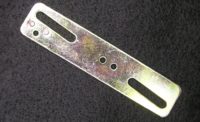Machine vision has been a rapidly advancing sector, and the integration of artificial intelligence (AI) and machine learning (ML) into the system has propelled its functionalities to new heights.
The evolution of machine vision lenses now incorporates AI and ML to provide superior object recognition and defect detection. “One big movement we see is with liquid lenses being integrated into camera technology,” says Jon Chouinard, vice president, sales and marketing, 1stVision. “Artificial intelligence and machine learning will have benefits in using the controls being built into cameras to adjust the focus using liquid lenses.”
According to Bob Archer, owner, Archer OpTx, the integration of AI into lens design presents an opportunity to determine whether specific attributes should be handled by the optics or processed in the system. “Keep in mind that image processing can’t do much with a bad image, so the optics must at least produce the required image quality,” he says.

It’s Not Magic: Learn More About Machine Vision Lighting
 Joe Gugliotti, president, R.J. Wilson, Inc., describes the importance of good images.
Joe Gugliotti, president, R.J. Wilson, Inc., describes the importance of good images.
Listen to more Quality podcasts.
Moreover, the importance of quality image acquisition cannot be stressed enough, even in an AI-powered environment. Joe Gugliotti, president, R.J. Wilson Inc., reiterates this. “AI and deep learning technology may help make a poor-quality image more usable, but it’s an inefficient way to utilize software processing power,” he says.
Notable Trends in the Field
Liquid lenses are becoming more integrated with cameras and manufacturers are providing increasingly comprehensive solutions to customers, experts say.
Archer adds that the industry is becoming increasingly environmentally conscious, valuing the thermal sensitivity of lenses and ensuring they withstand harsh environments. He also emphasizes the importance of lighting, terming it as critical as the imaging side.
Gugliotti identifies the trend of cameras moving towards higher resolution sensors with smaller image pixels, stressing the need for lenses to evolve simultaneously and offer support to the minute pixel sizes.
The Evolution of Machine Vision Lenses
Chouinard notes that lens manufacturers have been quick to adapt to changing demands by designing lenses suited to smaller pixel pitches, thereby resulting in improved lens performance.
Vision & Sensors
A Quality Special Section
Lens design has advanced dramatically, Archer says, especially the industry's newfound ability to use unique surfaces and break away from the traditional spherical ones. Despite the evolution, “the lion’s share of the applications out there still use the same old ‘glass elements stacked in a lens barrel’ technology,” he says.
The industrial lens sector hasn’t remained untouched. “The camera sensor trend is going to be toward squeezing more pixels into the standard format sizes available, leading to smaller image pixels,” Gugliotti says. “Lenses must keep up with these advances.”
As the world of machine vision lenses witnesses an integration of AI and ML, the subsequent enhancements in image processing, object recognition, and defect detection are evident.



